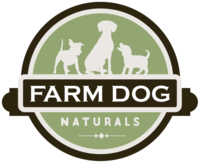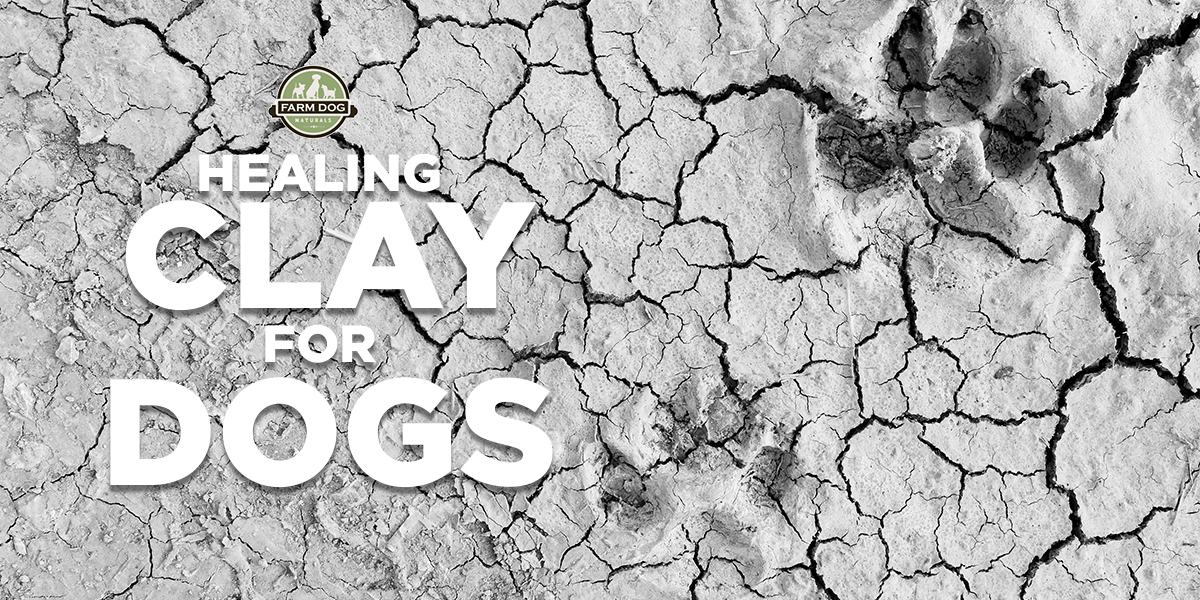Clay is a safe healing method that is suited for those of us that like to explore the world of holistic healing and self-care. It is also a method that we can put in our medical arsenals to help our dogs defend themselves, both internally and externally, against the onslaught of toxins that they encounter on a daily basis.
Types of Healing Clays
There are many types of healing clays found throughout the world. Here are the most common:
- Bentonite is a green clay that has a high absorption rate and a unique chemical structure. The surface particles are both negatively and positively charged. Bentonite can soak up all sorts of wee beasties. Clay is similar to an ant in that it can carry particles three to four times its size and hold on to them as they travel through and outside the body.
- Montmorillonite is popularly known as French Green Clay. Montmorillonite gets its green color from the algae-rich dried up sea beds of the Mediterranean. This type of clay is safe – it is perfect to consume internally. When soaked with spring or purified water, Montmorillonite binds to toxins and holds them safely so they can be excreted out of the body. This makes French Green Clay invaluable for removing blood toxins, bacteria, and heavy metals.
Montmorillonite clay also has anti-inflammatory properties. It is high in silica and supports the production of fascia and connective tissue to help decongest arthritic and muscular conditions. Therapeutic use of French Green Clay could help to relieve symptoms of arthritis in elderly dogs. - Illite is a fine particle clay, so it does not swell when soaked. This green clay is rich in sea minerals. It helps support the body’s own healing mechanisms by having the highest adsorption rate. Illite is a magnet for toxins and it is by far the best choice for detoxification purposes.
- Redmond Clay can be used internally and externally. It’s high sodium and calcium content make it perfect for topically drawing out infections and bacteria due to it’s polarity that attracts those nasty bugs. Redmond clay can be used for joint care, insect bites, stings, and topical inflammations.
How To Use Healing Clay for Dogs
Therapeutic clays come in different colors and structures and each has unique qualities. White and green clays are used internally while brown, red, yellow and blue clays are used externally. What I love about healing clays is that they can be used with other forms of treatment. You can purchase quality clays at Mountain Rose Herbs.
Before you begin to use clay for dogs, please take these guidelines into consideration:
- Never let clay come in contact with metal. Use glass or wooden container and utensils. Store your clay in glass containers so it will remain sterile and safe for first-aid use.
- Use pure filtered or spring water.
- Treat one malady at a time.
- Give your dog breakfast at least two hours after a clay treatment.
- If you or your dogs are on medication, wait at least two hours after ingesting clay to take any medications or herbs.
External Use
You have heard the term “rub some dirt on it”- you really can AND it will help.
Poultices are little masses of material, in this case clay, wrapped in clean cotton or muslin.
You will only need three items:
- 1lb. pure green clay
- 1/2 cup of cool spring or purified water
- Unbleached Cotton Muslin
Directions: Mix clay with enough water to make a thick paste. Spread a 1-inch paste with a wooden spoon on to the center of the muslin approximately 2 inches bigger than the area to be treated. Apply the poultice clay side down and leave it alone until the clay pulls away from the skin. This indicates that the treatment is finished. Repeat daily until healed.
A compress is much like a poultice, but you are using the compress on undamaged skin. Clay compresses can be administered either hot or cold. A clay compress is excellent for arthritic or working dogs where stiffness or cramping is an issue. Compresses are a wonderful way to treat chronic inflammation.
Directions: Use hot water and the directions above to make a clay paste as warm as the body will allow. (Test the temperature of the clay on your wrist before applying to your dog or yourself.)You can repeat this treatment every few days to relieve symptoms. For cold compresses, use ice cold water when mixing with the clay.
The dry application can be used as a disinfectant in treating wounds. Clay can immediately stop bleeding wounds and prevent scab formation. This type of application has been successfully used in the treatment of hot spots, stings, bites, and severe itching.
Directions. Mix clay powder and water together and make a dry paste. Apply to bleeding wounds and wounds that need to heal without scabbing. This method can help avoid abscesses and prevent a healing wound from itching.
Internal Use
- 1 tbsp Bentonite, Illite, or Montmorillonite clay.
- 4 ounces of cool spring or purified water for each tsp of clay.
- 1oz Needleless syringe
These guidelines apply to both humans and dogs.
Directions: Take the allotted measurement of clay and mix with water as directed. Let this slurry stand overnight. Give to your dog with a syringe or in some wet food the next morning on an empty stomach. Wait at least two hours to feed breakfast. Make sure your dog has access to unlimited fresh water throughout the treatment.
Dosage Guidelines:
| < 20 lbs | 1/4 teaspoon |
| 21-50 lbs | 1/2 teaspooon |
| 51-90 lbs | 3/4 teaspoon |
| each additional 20lbs | add 1/4 teaspoon |
Tip: Sometimes using clays internally can cause rapid detoxing which can result in constipation or diarrhea. If this should occur, ease up on the amount of clay you are using and work your way up to the desired amount.
Both you and your all natural dog can benefit from the many different types of clay. Give it a try and see!

